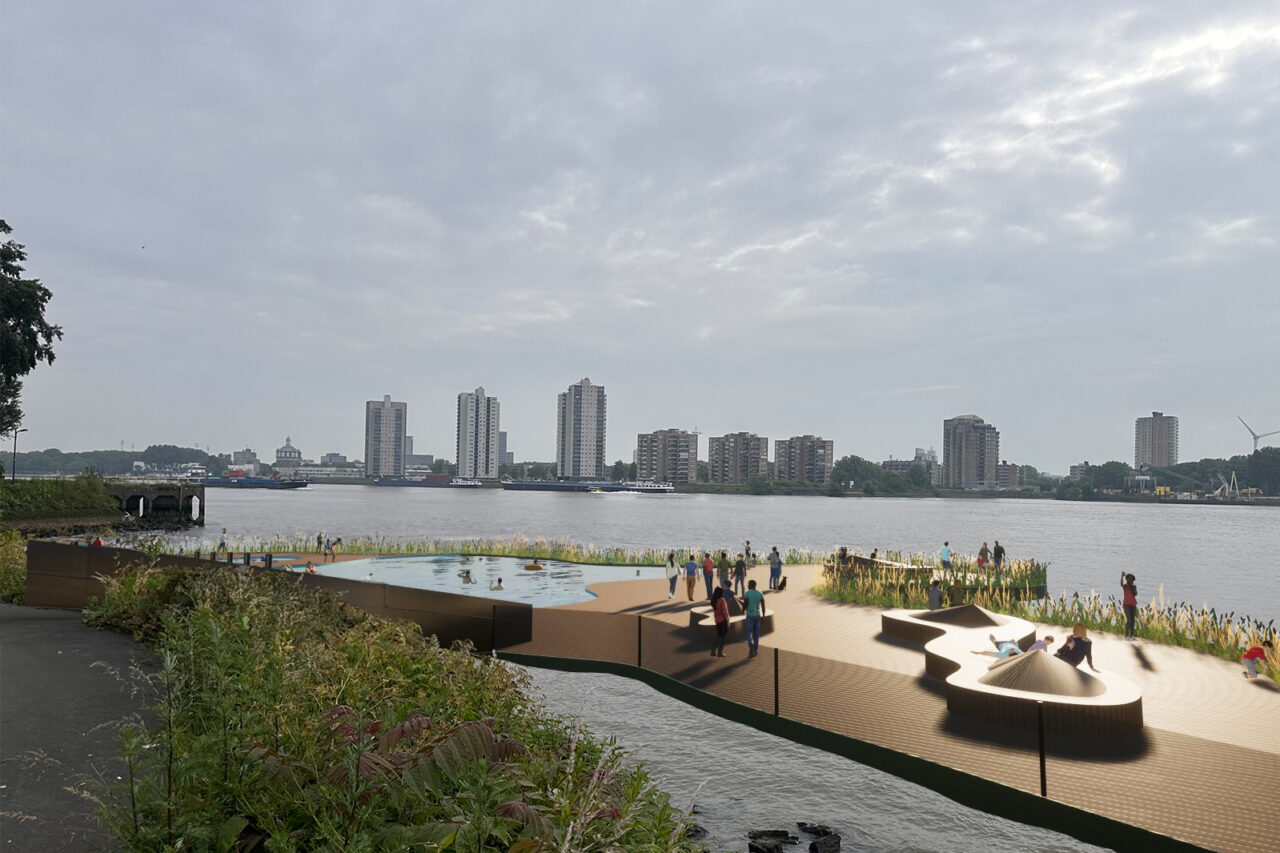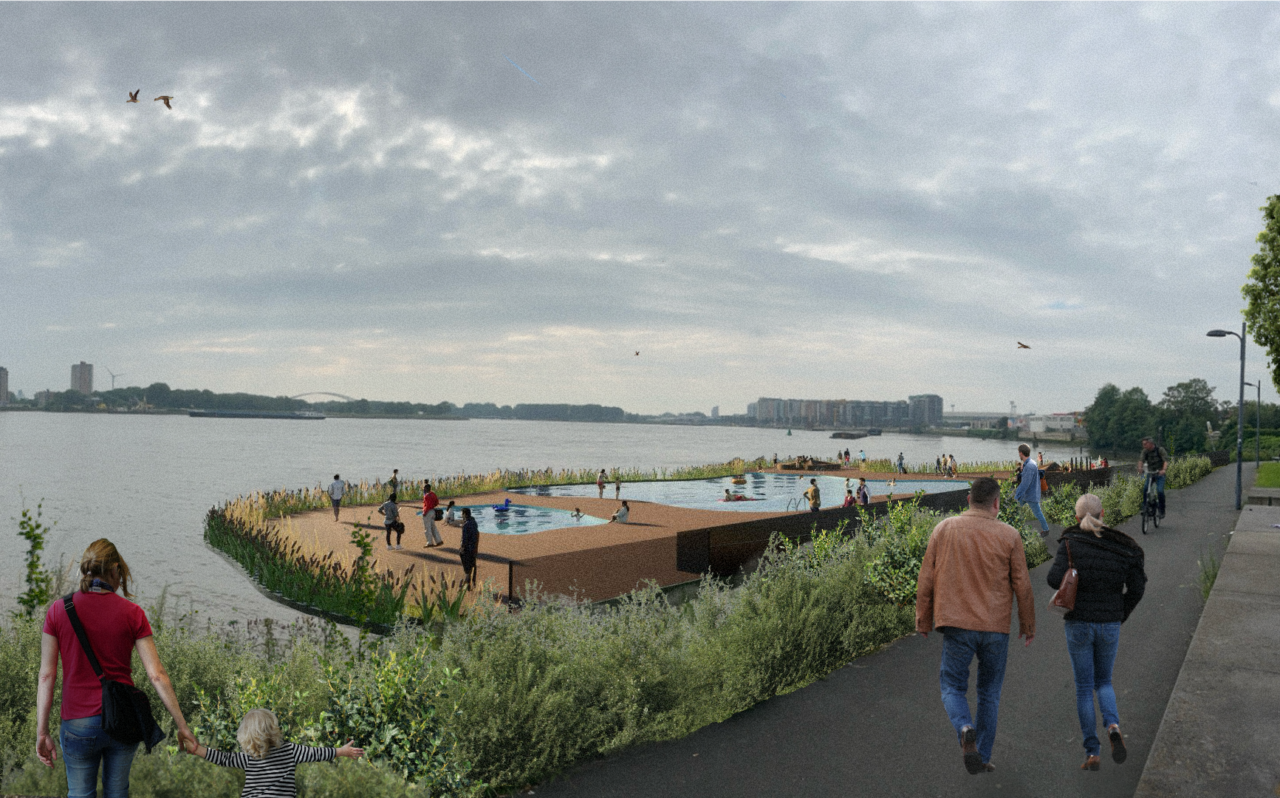From the Earth to the Shore

A recreational facility in the Nieuwe Maas
Project details
- Year
- 2024
- Programme
- Bachelor – Spatial Design
- Practices
- Commercial Practices
- Minor
- Futures & Presence

What use does a park have if it doesn’t feel connected to its environment?
Located right next to the Rotterdam South train station, the Mallegatpark gives people a first glimpse into the neighbourhood. Yet the space feels deserted, with empty grass fields, a few scattered benches, and little room for biodiversity. This opposition seems flagrant: plenty of open space and grass, but very few bushes or flowers. Connected to the park, the Nieuwe Maas river. I was struck by the enormous potential to connect this park with the water, yet it is now only an anchorage point for ships. Right before the water, two domes and a water tower stand out. These symbols remind the public of the rich history of this particular park.
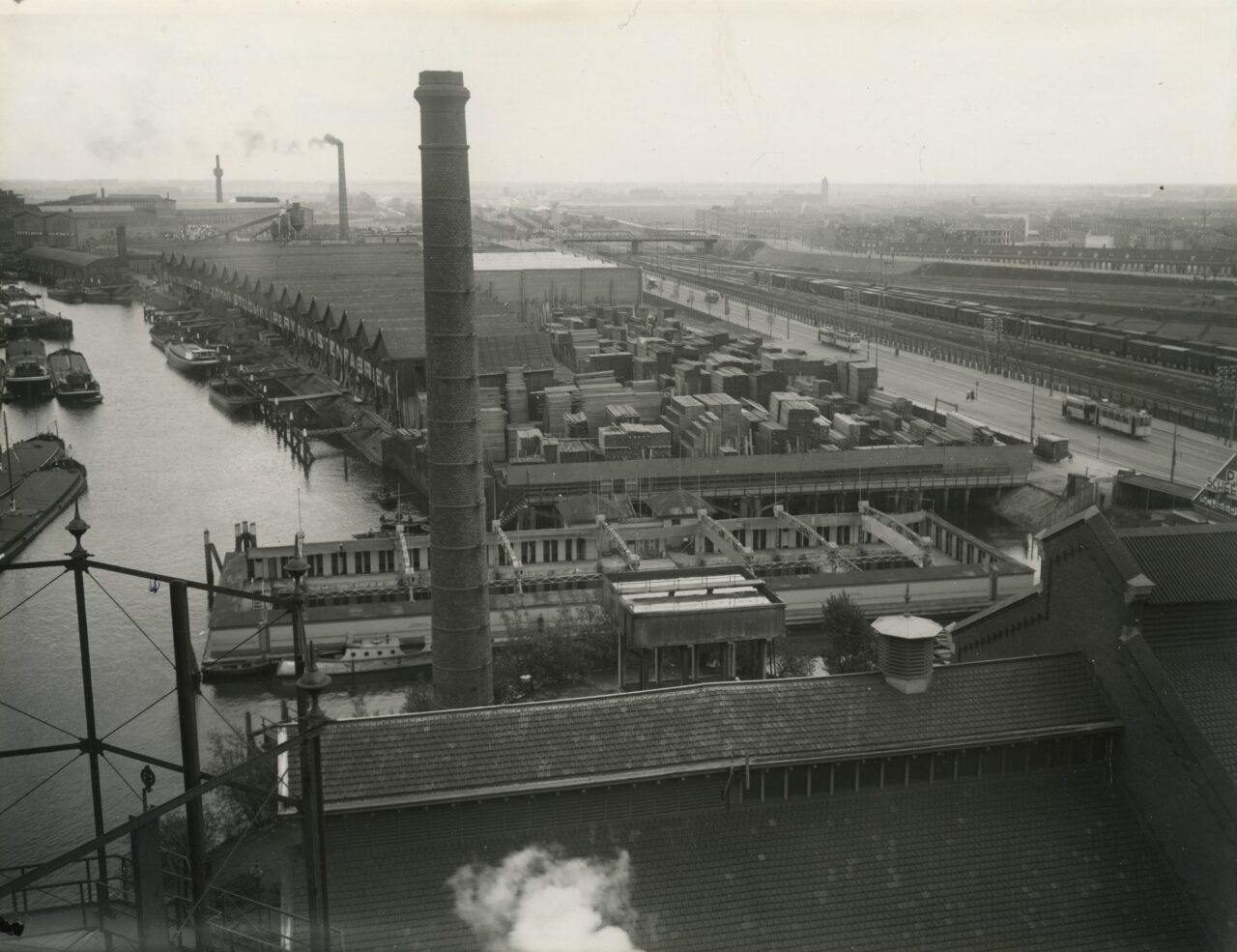
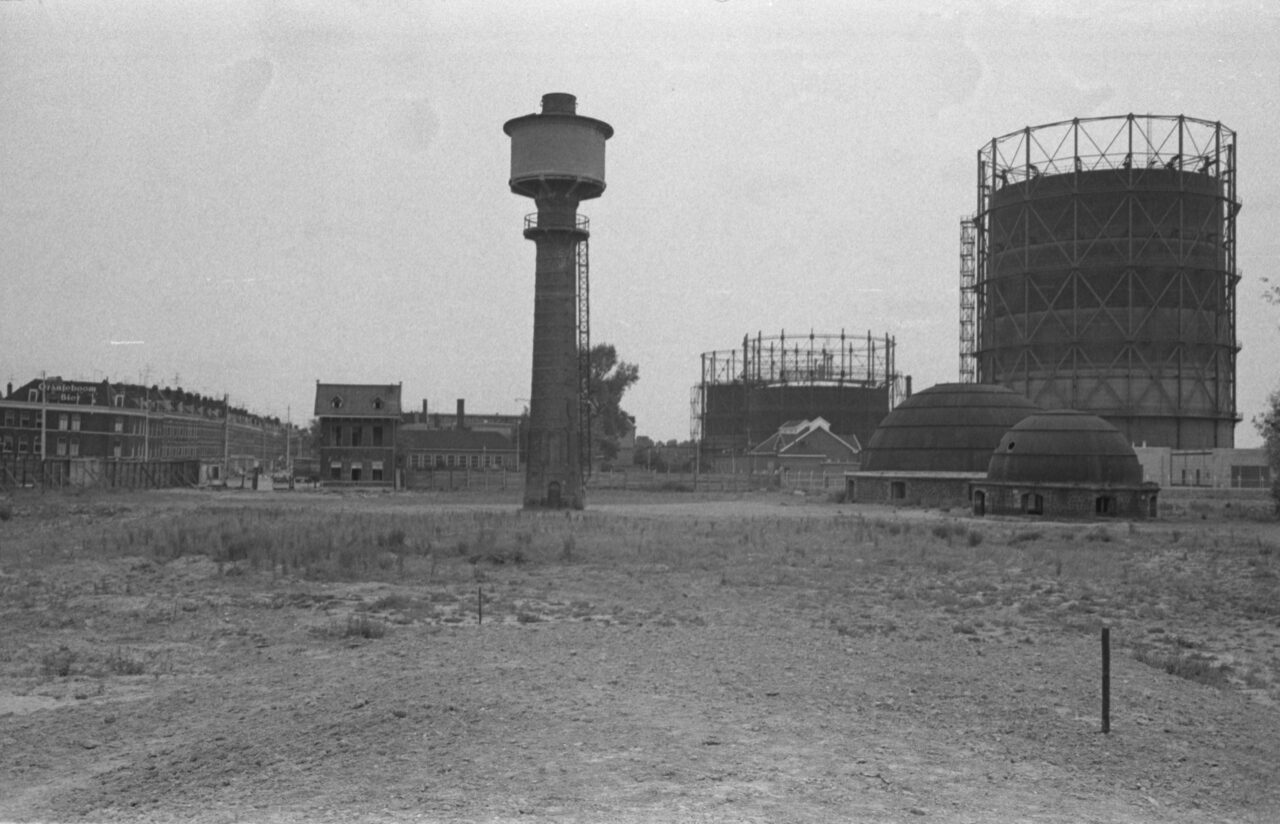
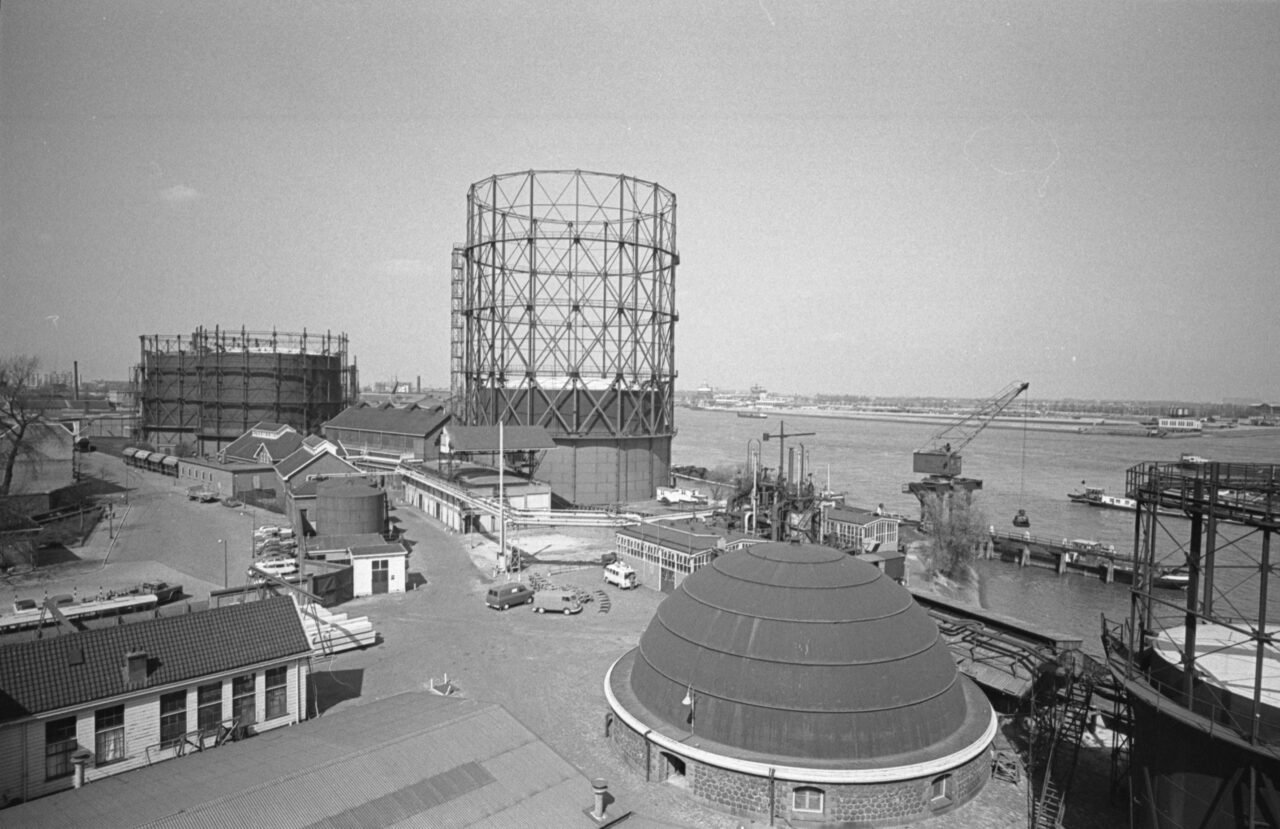
This history lies not only in the water but also in the earth. Home to the Feijenoord gas factory from 1879 until 1968, the park had traces of oil, zinc, phenol (hydroxybenzene) and iron cyanide pollution. The Mallegatbad also found its haven here for 39 years, until it was moved to another location in 1961. This initiative has since then not been implemented, despite the Nieuwe Maas’ potential to harbour these floating pools.
Rotterdam is also a city that’s constantly evolving, innovating and implementing greener infrastructures, contributing to a sustainable future. With this comes the role of designers to contribute to change. As a designer, intrigued and fuelled by future-proof architecture, I chose this project to dive deeper into the subject. Using a speculative lens, I delve into the possibilities of redesigning current harbour parks and creating a recreational facility which incorporates green filtration systems to gradually help clean the river.
The water and the history of the Mallegat inspire this recreational facility. The global concept of redesigning these parks incorporates several elements, such as phytoremediation for soil sanitation, along with habitable green. For my graduation, I focused on the floating pool as a recreational facility.
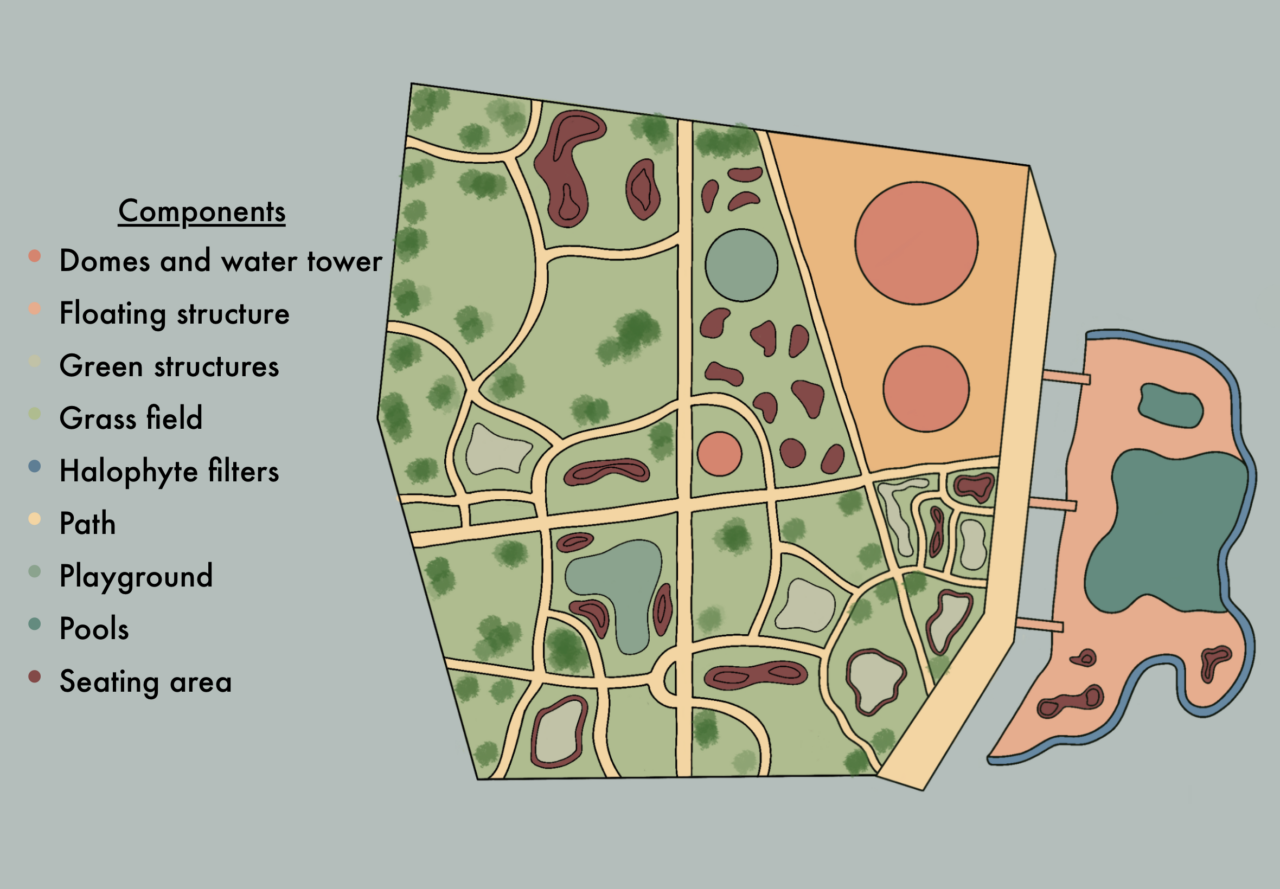
Shaped as a reminder of the power and movement of water, this recreational facility integrates two pools, with a total area of around 575m². The structure readapts these filtration systems commonly used in aquaculture for recreational purposes using constructed wetlands. As the Nieuwe Maas is home to brackish waters, it is the ideal environment to use saline-tolerant plants, effective in the natural filtration of water. The water from the Nieuwe Maas is filtered through halophytes and a UV filter, used for the pools. That water is then again pumped back into the Nieuwe Maas, creating a cycle to gradually clean the river. With the purpose of modularity, these types of structures can be replicated and adapted according to new environments or harbour areas.

Socially, the recreational space offers a new way of interacting with the harbours of Rotterdam. Encouraging this reconnection with our environment helps us gain awareness of how we contribute to making our city greener. This contributes to revitalizing harbour areas in the city, whilst offering a new space for interaction and recreation. Along with ongoing initiatives to use the domes for public events, this floating swimming pool would reinforce a sense of community, open to all.
The design demonstrates how recreational facilities can revitalize harbour areas by incorporating green methods and bio-based materials. Highlighting the potential of these areas, the project focuses on creating a circular system for the future, whilst commemorating the past.
